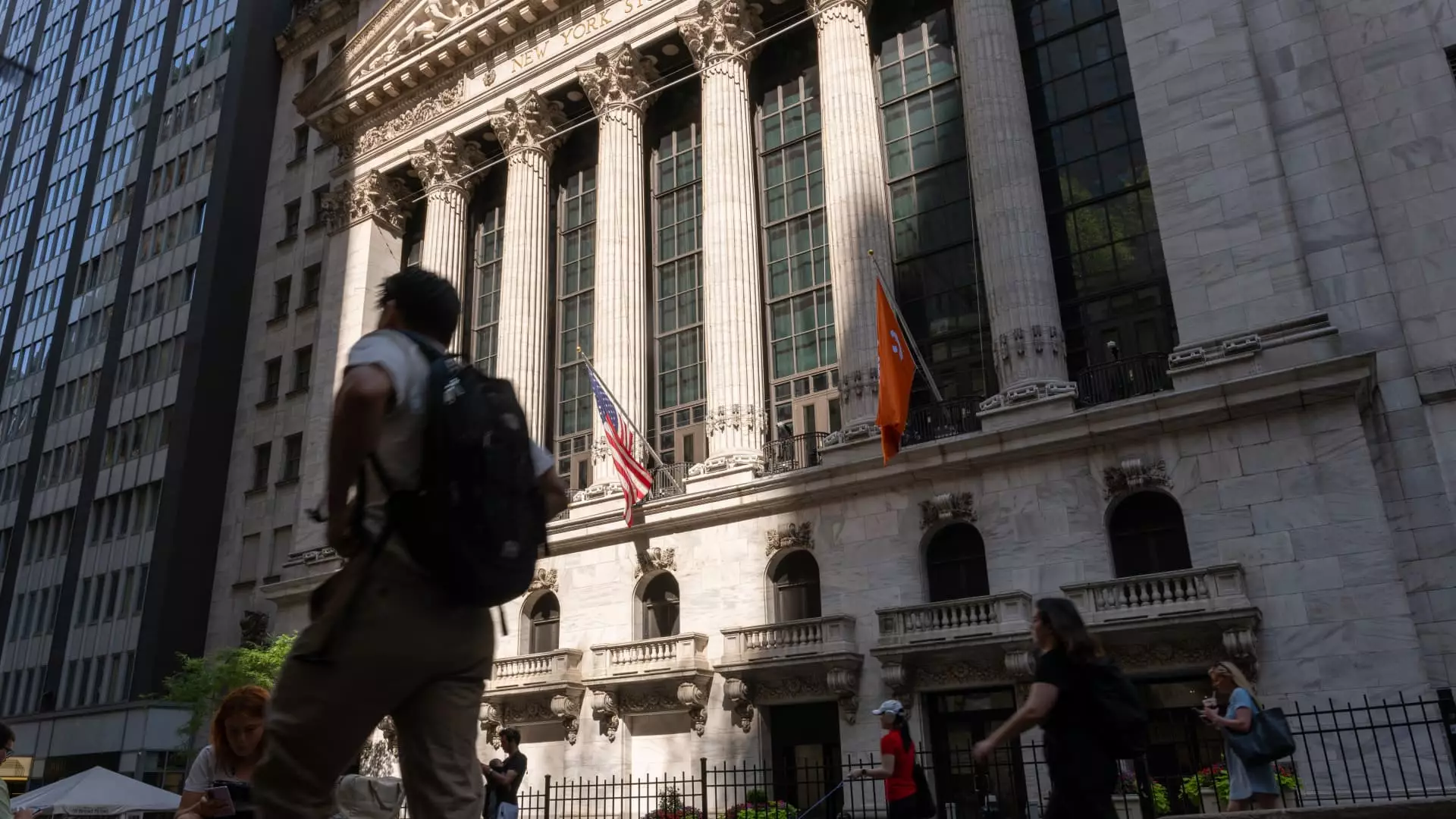The landscape of mergers and acquisitions (M&A) has always mirrored the health of the economy, and recent fluctuations in market dynamics have proven to be no exception. Despite a temporary disruption caused by the tempestuous tariff policies introduced by the Trump administration, a palpable energy has returned to the M&A sector. The initial optimism of 2023, which suggested a vibrant resurgence in deal-making activities, underwent a harrowing pause. Yet, the resilience displayed within industries that once found themselves subject to regulatory turbulence deserves attention and praise.
Indeed, the fleeting weeks of uncertainty following Trump’s announcement showcased how quickly fear can grip the markets, leading to a precipitous drop in M&A activity. The sudden halt demonstrates the interconnectedness of trade policies and business decisions; when the political landscape falters, it inadvertently touches the ambitions of CEOs and investors, creating a domino effect within commercial growth.
Returning to Stability
In the aftermath of the tariff turbulence, there is a refreshing glimmer of hope for those advocating a vigorous M&A environment. Analysts are cautiously optimistic, suggesting that as clarity improves around trade regulations and market dynamics stabilize, the appetite for transactions will reach unprecedented heights—nearly eclipsing previous records. M&A analysts note that while there was a staggering 66% dip in deals immediately following the tariff announcement, recent data suggests significant recovery. By mid-May, the valuation of deals surged above $125 billion—a phenomenal rebound that not only bodes well for businesses but also signifies that investors are once again willing to engage in transactions with surrounding optimism.
This rapid recovery signals that smart investors and CEOs are recalibrating their strategies, realizing that the economic climate can be navigated and manipulated to their advantage. In this evolving narrative, companies such as Kraft Heinz stand out—eager to overhaul their portfolios and make bold moves in a meticulously calculated environment.
Specialized Deals on the Rise
Interestingly, the uptick in M&A activity has a distinct flavor. A noticeable trend is leaning toward special situations—a category that indicates strategies tailored to meet specific pathways created by market conditions. These transactions may involve motivated sellers who are driven by unique needs rather than overall market stability, enhancing flexibility in deal structures.
Investors and firms are recognizing that smaller-scale transactions often come with less regulatory scrutiny while also presenting a manageable financial risk amidst rising borrowing costs. Consequently, the focus on niche acquisitions will create avenues for strategic growth without the burdens of significant market exposure. This renewed enthusiasm hints at a burgeoning understanding among industry players that not all deals need to set historical benchmarks in value; rather, they can consist of smart plays that metamorphose businesses gradually.
The Major Players and Their Movements
The return of prominent deals reflects broader trends in technology, telecommunications, and utilities. Noteworthy transactions—such as Google’s investment and Constellation Energy’s acquisition—exemplify that forward-thinking companies are seizing opportunities, remaining vigilant against potential disruptions. Data illustrates that major firms are adapting to shifting landscapes, translating specific growth imperatives into executed deals.
Moreover, mergers like the much-anticipated collaboration between AT&T and Lumen Technologies show the strategic intentions underlying such moves. By merging strengths, companies are shaping their futures while simultaneously insulating themselves against unpredictable market oscillations.
In this transformative climate, brands like Dick’s Sporting Goods and Foot Locker’s merger resonate with potential symbiosis, paving the way forward in a consumer market that remains sensitive to changing dynamics.
Innovation Amidst Adversity
Despite volatility, the spirit of innovation thrives amidst those hell-bent on survival and growth. The emerging focus on smaller transactions underscores an inventive approach to problem-solving, as companies explore creative avenues to navigate the climate. With firms like PepsiCo demonstrating adaptability by engaging in nimble acquisitions like that of Poppi, there’s an unmistakable undercurrent of progressive thinking challenging the status quo.
The adaptability of these firms illustrates a broader implication for the economy; one where businesses are learning to pivot ahead of uncertainty, fostering resilience that ultimately strengthens their foundation against volatile trading environments.
In a business world increasingly subjected to external pressures, the emergence of new deal-making strategies, focused on niche acquisitions and innovative collaborations, remains a breath of fresh air. This disruptive yet promising evolution will redefine the landscape of M&A as we grow accustomed to adapting to external forces, paving the way for an invigorating economic future that holds promise for every stakeholder involved.

